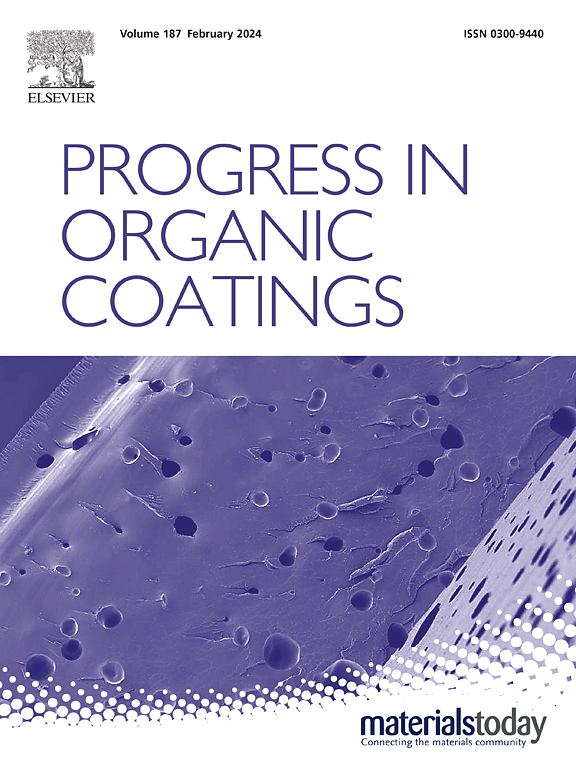Learning from nature: Flexible cross-linkable full-bio-based waterborne S-PEEK sizing agent for constructing “hard-soft” structure on CF surface towards superior performance of CF/PEEK composites
IF 6.5
2区 材料科学
Q1 CHEMISTRY, APPLIED
引用次数: 0
Abstract
The recently reported waterborne cross-linkable PEEK sizing agents have garnered considerable attention for refining the interfacial interaction and solvent-resistance of CF/PEEK composites. Nevertheless, the resultant stiff crosslinked structure has rendered the interphase brittle, seriously affecting the stress transfer and energy dissipation of composites. Inspired by the “hard-soft” components found in the robust pearl shells of nature, sebacic acid derived fluoride (F-AC) and magnolol have been employed to elaborate a flexible, cross-linkable, full-bio-based waterborne S-PEEK sizing agent, aimed at bolstering the mechanical strength of CF/PEEK. Additionally, the Tg and T5% of S-PEEK were 61 °C and 442 °C, respectively. The particle size range of the waterborne S-PEEK sizing agents spanned from 184 to 286 nm. Notably, the cross-linked structure generated by the allyl groups within magnolol during the processing stage of CF/PEEK serves as the hard components, whereas the long-chain fatty segments of F-AC acts as the soft constituents. This combination constructs a biomimetic hard-soft structure on the CF surface, maximizing the advantages of rigid structures by incorporating soft components. Additionally, it collaboratively contributes to energy dissipation, prevents stress concentration, and mitigates the risk of brittle fracture in composites. Specifically, the bending strength, interfacial and interlaminar shear strength of CF/PEEK experienced respective increases of 40.71, 77.53 and 62.62 % compared to pristine CF/PEEK following sizing treatment. Notably, even after enduring 72 h of solvent aging, the mechanical integrity was preserved at approximate 95 %. Our work is expected to provide a promising strategy for fulfilling the distinguished capabilities of CF/PEEK in the future.

求助全文
约1分钟内获得全文
求助全文
来源期刊

Progress in Organic Coatings
工程技术-材料科学:膜
CiteScore
11.40
自引率
15.20%
发文量
577
审稿时长
48 days
期刊介绍:
The aim of this international journal is to analyse and publicise the progress and current state of knowledge in the field of organic coatings and related materials. The Editors and the Editorial Board members will solicit both review and research papers from academic and industrial scientists who are actively engaged in research and development or, in the case of review papers, have extensive experience in the subject to be reviewed. Unsolicited manuscripts will be accepted if they meet the journal''s requirements. The journal publishes papers dealing with such subjects as:
• Chemical, physical and technological properties of organic coatings and related materials
• Problems and methods of preparation, manufacture and application of these materials
• Performance, testing and analysis.
 求助内容:
求助内容: 应助结果提醒方式:
应助结果提醒方式:


